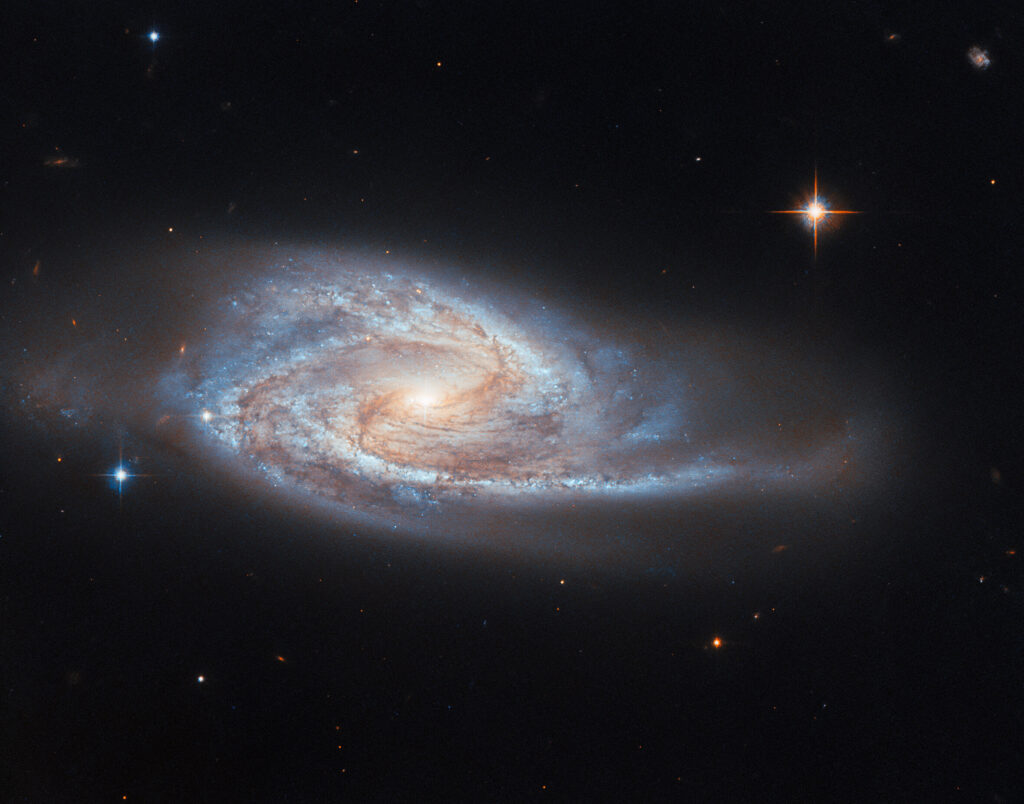The Hubble telescope mission team has published a new image. It shows the galaxy UGC 3478.

UGC 3478 is located 128 million light-years away from Earth toward the constellation Camelopardalis. Like our Milky Way, it is a spiral galaxy. Hubble’s photo shows its extended arms, which are dotted with a large number of stars, as well as dark strands of dust.
If you look closely at the image, you can see that Hubble has a bright area at its center. That’s its core. It’s hiding something special: a growing supermassive black hole.
As we know, we cannot see black holes themselves, since they completely absorb everything that enters them, including light. However, their presence is revealed by radiation. The point is that the material falling into the black hole collides and heats up, which is accompanied by the formation of very strong radiation. In the case of UGC 3478, its spectrum includes hard X-rays that clearly distinguish it from the rest of the galaxy’s stars.
UGC 3478 was imaged by Hubble as part of a project that aims to study nearby galaxies with active nuclei. Astronomers hope to realize that the data collected will help understand how galaxies interact with the supermassive black holes at their heart.
Earlier we told you about how Hubble created a unique portrait of a star cluster.
According to Esahubble


